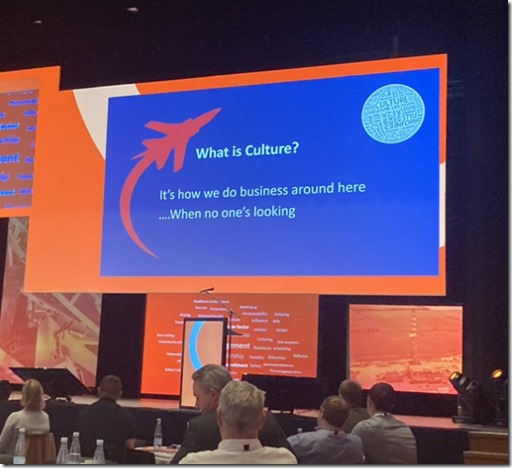Culture Silences in Safety – Holism
There are so many critical parts of culture that Safety is silent about and yet it is so noisy about things in culture that are relatively unimportant.
Just have a look at the common garden variety safety culture surveys on the market and look at their agenda. What is most common is that culture is never defined or defined poorly. So much of this stuff is just about data, systems and behaviours. Most often the key driver in these surveys is focused on measurement and so often the focus is on things that bar no significance in keeping people safe. Here are a few examples:
- https://safetyrisk.net/wp-content/uploads/2013/10/safety_culture_survey_questionnaire_2291.pdf
- https://insync.com.au/insights/how-to-measure-and-improve-your-safety-culture/
- https://survey.forgeworks.com/
- https://www.honestly.com/survey-templates/safety-culture-survey
- https://safetyculturesurvey.online/
- https://nbaa.org/wp-content/uploads/2018/04/nbaa-conducting-a-safety-culture-survey.pdf
- https://www.consultdss.com/safety-perception-survey/
- https://www.hse.gov.uk/foi/internalops/fod/inspect/mast/safetychecklist.htm
If there is a definition, most often it’s something like this below (https://www.cec.health.nsw.gov.au/__data/assets/pdf_file/0011/588143/A-Guide-to-Safety-Culture-Measurement.pdf ) (source ‘A Guide to Safety Measurement’ NSW Government Clinical Excellence Commission (p.3):
‘What is safety culture?
Culture is the way we think — our values, our attitudes, our perceptions and our beliefs. It’s also how we act — our habits and our typical behaviours – and is often referred to as ‘how we do things around here’.
What we see in these surveys and this definition is the common old beauty of behaviourism, it’s always ‘what we do around here’. When your only tool is a hammer, every problem is framed as a nail.
What we also observe is safety language about culture that omits any discussion about mythology, symbolism, religion, faith, artefacts, collective unconscious, personhood, ethics and many other critical aspects of culture. There are so many silences it is unbelievable.
I was sent this pic from a conference in Europe yesterday and this is the common view of Safety in defining culture. See Figure 1. Safety Culture
Figure 1. Safety Culture
Just look at this definition and it’s even worse, it’s focus is behaviourism and business and then look at the symbols. What utter nonsense, no wonder Safety has no clue about culture.
The trouble is with this narrow and simplistic definition is that most strategies that follow definition and strategy have little to do with culture. And so, nothing changes except the bank account that finances the survey and the snake oil being sold as an outcome.
Just grab any of these surveys listed above and look at their methodology, then method and question set, then ask: what is this survey not interested in? What is this survey silent about?
We know that organizational cultures are a major factor in the creation of workplace mental health issues and PTSI (Post Traumatic Stress Injury). We know that workplaces that are: bullying, abusive, authoritarian, perfectionist (read zero), focus on objects, narcissistic, sociopathic and production-centric create mental health issues at work. Zero ideology not only fuels such cultures but creates more abuse when trauma is manufactured. Just look at any organization that loves zero ideology and look at how they investigate events.
We also know that therapies that are dualist and binary don’t work. Anyone who experiences PTSI requires a holistic response. PTSI and mental health are not brain issues but person issues. The brain-centrism of the risk and safety industry is so poorly equipped to respond to people who experience PTSI.
When we watch Safety flock to neuroscience to explain harm (https://safetyrisk.net/what-is-the-human-body-for-in-safety/ ) it’s always about reprograming the brain (read behaviourism) and never about embodiment and holism. You will find nowhere in the safety industry a discussion about holism, personhood or embodiment as you do the professions (https://drarielleschwartz.com/embodiment-in-trauma-recovery/#.Yog2bmBBzUI ), particularly in relation to culture.
When you read about ‘human factors’ in safety, humans are considered as a ‘factor’ in a system. In human factors, safety makes the purpose of humans to serve systems not systems to serve humans (https://safetyrisk.net/human-factors-is-never-about-humans/ ).
When one understands culture holistically one engages in a Transdisciplinary way with the many things Safety excludes from its understanding of culture. These have been articulated in previous posts on this theme of culture silences:
- https://safetyrisk.net/culture-silences-in-safety-mythology/
- https://safetyrisk.net/culture-silences-in-safety-symbolism/
- https://safetyrisk.net/culture-silences-in-safety-artefacts/
- https://safetyrisk.net/culture-silences-in-safety-the-collective-unconscious/
In Transdisciplinarity (https://safetyrisk.net/transdisciplinary-thinking-in-risk-and-safety/ ) we listen to expertise in culture (anthropologists, archaeologists, cultural theorists and religious studies and many more) to really develop a holistically understanding. One thing is for sure, if you want to know about culture, don’t ask an engineer.
Without a holistic approach to culture what happens most often, after a safety culture survey has been conducted is: increased burden of excessive systems, more BS of BBS (https://safetyrisk.net/is-bbs-credible/ ) and dehumanizing of persons.
Isn’t it so strange that when someone suffers trauma all of the therapies that follow are holistic (https://pdflake.com/wp-content/uploads/2022/01/The-Body-Keeps-the-Score-PDF.pdf ). In post-trauma persons are understood holistically and socially (https://www.apa.org/pubs/books/alternative-therapies-ptsd-sample-chapter.pdf). How fascinating that Safety doesn’t consider persons this way before trauma. When a worldview of culture is framed through behaviourism, engineering and scientism culture is logically defined as ‘what we do around here’.
Unfortunately for Safety, humans are objects as factors in a system and the system is most often what Safety thinks is culture. This is more so in methods such as BBS.
In BBS, humans are just the sum of inputs and outputs, as cogs in a machine. Some organisations even symbolize safety it this way (https://lorhsems.com/wp-content/uploads/History-of-Next-Gear.pdf ) and then market it as ‘differently’ and good.
If you are interested in a positive approach to understanding culture in a comprehensive way you can study online with Dr Long (https://cllr.com.au/my-account/basket/ ). Once you understand culture holistically and comprehensively you will see why many of the things Safety does about culture don’t work.




Do you have any thoughts? Please share them below